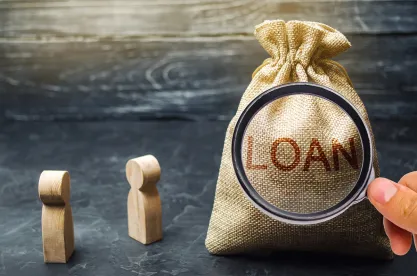EDITOR'S NOTE: On the morning of Monday, July 6, the SBA released a database with the names and information for all entities that received a PPP loan of $150,000 or more. You can download that list here. At this time, it is unclear if and when the names of those entities that received less than $150,000 will be released.
Did your law firm, or perhaps one of your clients, apply for and accept a business loan from the Paycheck Protection Program (PPP), the $669-billion business loan program established by the US Federal government’s Coronavirus Aid, Relief, and Economic Security Act (CARES Act) to help certain businesses, self-employed workers, sole proprietors, nonprofit organizations and tribal businesses continue paying their workers ?
If so, the fact you accepted that loan is about to become public information. And that means you must be prepared to answer questions about your acceptance of that loan if asked about it.
As part of a recent rule change, Treasury Secretary Steve Mnuchin agreed to give congressional committees full access to all loan data, including borrower names and loan amounts “with the understanding that nonpublic personally identifiable and commercially sensitive business information will be treated as confidential.”
The Small Business Administration (SBA) said it plans to disclose the names, addresses, zip codes, demographic data and industry codes of the borrowers who received at least $150,000. The SBA says it won’t divulge specific loan amounts, with loans grouped into one of five categories: $150,000 to $350,000; $350,000 to $1 million; $1 million to $2 million; $2 million to $5 million and $5 million to $10 million.
Three-quarters of the dollars loaned through the program fall under those five categories. “For PPP loans of less than $150,000, totals will be released, aggregated by ZIP code, by industry, by business type, and by various demographic categories,” said to SBA Administrator Jovita Carranza. However, some knowledgeable observers believe that ultimately, all loans will be made public.
We have two former journalists on our staff. Thom Fladung, our managing partner, is the former managing editor of Detroit Free Press, The Plain Dealer and the Akron Beacon Journal. Before coming to Hennes Communications, Howard Fencl ran TV newsrooms for more than 20 years. Both agree that once the loan recipient information goes up on a searchable, public database, it will immediately become “low-hanging fruit,” with news editors sending reporters out to do follow-up stories about who took what, how much and why.
Frankly, we don’t have any problem with this disclosure. The SBA routinely makes public information about the dollars loaned to small businesses, so why should PPP dollars, disbursed from the U.S. Treasury Department, be any different?
What’s different this time is the sheer size of the PPP program and the fact that an extraordinary number of law firms – and their clients - received these “forgivable loans,” in some cases worth multi-millions of dollars, as did a wide variety of schools and other organizations with large endowments. According to the Wall Street Journal, as of last week, 4.6 million PPP loans totaling $513 billion have been approved.
While there are scores of reasons – all 100% legal and ethical – why a law firm or other organization took a PPP loan, crisis management specialists know that optics often overshadow facts.
And it isn’t just reporters who will shine a spotlight on loan recipients. Social media activists will also seek to highlight businesses and organizations in the community that received the dollars – with a direct or implied demand for justification.
If your law firm or client’s business applied for and accepted PPP dollars in good faith, you must be prepared to defend the loan if questioned by the media or other stakeholders – without looking defensive.
As our good friend, Richard Levick, has said repeatedly, “Use peacetime wisely.” Levick recently suggested making sure you’re ready to answer such questions as:
-
Did you easily fall within the PPP guidelines or did you have to manipulate the rules to fit?
-
Exactly how was the money used?
-
Did you have access to other funds?
-
Specifically for schools, what has been your historic commitment to scholarships, diversity and economically disadvantaged students? What would the absence of PPP money mean for the future of these programs?
-
How do you currently support your community and the small businesses within it?
Levick further suggested that companies and organizations that come across more sympathetically in this equation will more easily deflect criticism than those who appear to have profited from this stimulus plan.
Now is the time to think about those optics, about how your partners, clients, employees, customers, friends – as well as traditional and social media outlets – are going to think when they find out how much you received.
We are not recommending spin. We’re talking, instead, of the exact opposite – transparency. If you took the dollars, we’re suggesting the creation of clear, succinct, direct messages and talking points that answer the questions most likely to be asked.
Additionally, once these questions are asked, you’ll probably have just minutes to provide an answer to reporters who are on deadline or social media speculation that will increase by the moment.




 />i
/>i

